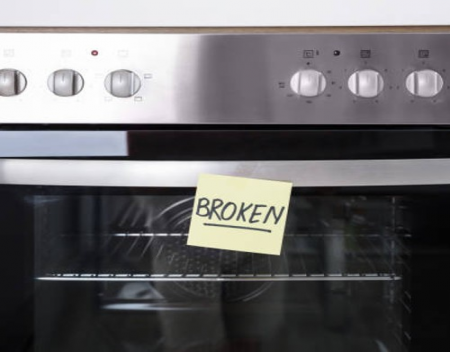Tipos de aparatos
- Aire acondicionado
- Automobile
- Chainsaw
- Circular Saw
- Lavaplatos
- Drills
- Secadora
- Drywall Screw Gun
- Horno
- Gas Fireplace
- Gas Grill
- Gas Patio Heater
- Grinder
- Heat Pump
- Impact Driver
- Impact Wrench
- Microonda
- Nailer
- Orbital Sander
- Calentadores de piscina
- Powerwall
- Distancia
- Refrigerador
- Television
- Lavadora
- Calentador de agua
Marcas de electrodomésticos
- A.O. Smith
- AccuCold
- Admiral Craft
- AGA
- Airrex
- Amana
- Ambiance
- American Range
- American Standard
- American Water Heaters
- Aquacal
- Armstrong
- Asko
- Avanti
- Avenlur
- Azure
- Beko
- Bellfires
- Bertazzoni
- Blackstone
- Blaze
- Blomberg
- BlueStar
- Bosch
- Bradford White
- Bromic
- Bryant
- Cafe
- Calcana
- Capital
- Carrier
- Char-Broil
- Char-Griller
- Chrysler
- Coates
- Coleman
- Comfortmaker
- Commercial Chef
- Continental
- Cosmo
- Cove
- Crown Verity
- Dacor
- Daikin
- Danby
- Danfoss
- DaVinci
- DCS
- Deco
- DeWALT
- Ducane
- Dyna-Glo
- Dyson
- EcoSmart
- Electrolux
- Element4
- Empava
- Equator
- Eurodib
- European Home
- Everdure
- Farberware
- Fhiaba
- FibroPool
- Fire Sense
- Fisher
- FiveStar
- Flare
- Flash Furniture
- Focus
- Ford
- Forno
- Forte
- Frigidaire
- Fulgor Milano
- Gaggenau
- GE
- General Motors
- GlowBrand
- Goodman
- Grundig
- GSW
- Haier
- Hayward
- Heatstar
- Heil
- Hestan
- Hisense
- Hitachi
- Hotpoint
- iio
- Ilve
- Impecca
- Ingignia
- Insignia
- JennAir
- John Wood
- Keeprite
- Kenmore
- Kenyon
- KitchenAid
- Kucht
- La Cornue
- Lennox
- LG
- Liebherr
- Lifetime
- Lion
- Luxaire
- Lynx
- Magic Chef
- Marvel
- Maytag
- McQuay
- MicroFridge
- Midea
- Miele
- Migali
- Monogram
- Montigo
- Mr Heater
- Napoleon
- Navien
- Nexgrill
- Noritz
- Panasonic
- Patio Comforts
- Payne
- Pentair
- Perlick
- PITT
- Premier
- Raypak
- Real Fyre
- Regency
- Reliance
- Rheem
- Rinnai
- Roma
- Ruud
- Saber
- Samsung
- Schwank
- Sharp
- Smeg
- Solas
- Sony
- Spartherm
- Speed Queen
- StaRite
- State Water Heaters
- Stiebel Eltron
- SubZero
- Summerset
- Summit
- SunGlo
- SunPak
- Sunpentown
- SunStar
- Superiore
- Takagi
- TCL
- TEC
- Tempstar
- Tesla
- Thermador
- Thor Kitchen
- Toshiba
- Town and Country
- Toyota
- Traeger
- Trane
- Twin Eagles
- U-Line
- Unique
- Vaillant Group
- Valor
- Verona
- Victory
- Viessmann
- Viking
- Vizio
- Weber
- Westinghouse
- Whirlpool
- Whynter
- York
- ZLINE
Categorías de artículos
- Aire Acondicionado
- Cuidado de los electrodomesticos
- Appliance News
- Dishwasher News
- Maquinas de secado
- Hornos
- Gas Fireplaces
- Microondas
- Calentadores de piscina
- Frigorificos
- Estufas - Cocinas
- Trucos y consejos
- Lavadoras
- Water Heaters
Más artículos
Why Did My Oven Suddenly Stop Working?

Troubleshooting your oven DIY not only helps you save money but also helps you hasten the repair procedure in case of emergencies. That said, if you’re unfamiliar with the components of an oven, we can assist you. Today, we’ll discuss some common issues that cause your oven to stop working. After identifying the fault, you’ll be able to repair it when next it occurs.
Tools You’ll Need.
When inspecting your oven for faults, you may have to settle for oven repair services to rectify them. Hiring a technician may cost between $200 and $400. While you may eventually need a repair technician, you can cut costs by troubleshooting your oven DIY.
When repairing it, don’t replace any part of the oven if your warranty is still running. Because by replacing an element, you may be unable to enjoy the warranty if the situation arises. So if you’re a fan of DIY, here are some tools that’ll make your oven repair a walk in the park.
Owner’s manual. It’s essential you work with the owner’s manual of your oven. The manual contains all the information you may need to fix your oven. Not to mention, it’ll help you identify the parts of the oven that are unfamiliar to you. If you’ve misplaced or thrown out your owner’s manual, you can get one at an appliance store. Ensure you pick an owner’s manual that fits the model of your oven.
A multimeter. The multimeter enables you to conduct simple tests to determine why your oven is not working. It scans both the ohms and level of voltage traveling through the wirings.
Reasons Why Your Oven Is Not Working.
If your oven is not working, the most common malfunction is that your heating element is bad. As a result of constant use, your heating element is likely to overheat. Thankfully, it’s one part of the oven that’s easily replaceable. Before you inspect your oven for faults, always ensure you unplug it from the power source and turn it off. Here are the problems to look out for in your oven.
Faulty ignition.
Your oven igniter not working is an issue you’ll easily notice without consulting an expert. Once you turn on your oven and it’s not heating properly, or at all, you have a faulty ignition. Your stove burner is glowing, but not heating may be because your igniter is weak or dirty. Sadly, most electric ovens come with weak igniters, so you may have to replace them.
Check your owner’s manual to know the area of your igniter. It’s often an entire unit located behind the oven. The igniter resembles a two-wire terminal wrapped with a gridiron cage.
If your igniter is not obvious in your oven, remove it by unbolting it from the oven panel bottom.
With a multimeter, check the continuity of light. The multimeter should show between 0 to 1100 ohms. If it doesn’t show a number between that range, your igniter is why your oven is not getting hot.
Turn off your gas and remove the debris, and gunk out of it.
Then use a sewing needle to empty the pilot light gap.
If these processes don’t solve the issue, it’s ideal for you to hire a technician.
Fuse issues.
If your oven isn’t working at all, check the fuse. Fuse malfunction is common in all electrical appliances, so your oven isn’t exempted. The problem may be due to wiring issues. Other times, the current in your home may cause your oven to get faulty. A blown fuse is not always simple to fix because several wirings connect to the various components in the oven.
So replacing a bad fuse may not serve as a quick replacement to the problem. But, if you can immediately find the faulty fuse, it’s ideal you change it. If your plug fuse is bad, replacing it is straightforward.
Keep in mind that whenever you’re changing your oven use, always replace it with a similar fuse.
For interior wiring issues, call a professional oven repair expert.
SOURCE: primeappliancerepairs.com

Troubleshooting your oven DIY not only helps you save money but also helps you hasten the repair procedure in case of emergencies. That said, if you’re unfamiliar with the components of an oven, we can assist you. Today, we’ll discuss some common issues that cause your oven to stop working. After identifying the fault, you’ll be able to repair it when next it occurs.
Tools You’ll Need.
When inspecting your oven for faults, you may have to settle for oven repair services to rectify them. Hiring a technician may cost between $200 and $400. While you may eventually need a repair technician, you can cut costs by troubleshooting your oven DIY.
When repairing it, don’t replace any part of the oven if your warranty is still running. Because by replacing an element, you may be unable to enjoy the warranty if the situation arises. So if you’re a fan of DIY, here are some tools that’ll make your oven repair a walk in the park.
Owner’s manual. It’s essential you work with the owner’s manual of your oven. The manual contains all the information you may need to fix your oven. Not to mention, it’ll help you identify the parts of the oven that are unfamiliar to you. If you’ve misplaced or thrown out your owner’s manual, you can get one at an appliance store. Ensure you pick an owner’s manual that fits the model of your oven.
A multimeter. The multimeter enables you to conduct simple tests to determine why your oven is not working. It scans both the ohms and level of voltage traveling through the wirings.
Reasons Why Your Oven Is Not Working.
If your oven is not working, the most common malfunction is that your heating element is bad. As a result of constant use, your heating element is likely to overheat. Thankfully, it’s one part of the oven that’s easily replaceable. Before you inspect your oven for faults, always ensure you unplug it from the power source and turn it off. Here are the problems to look out for in your oven.
Faulty ignition.
Your oven igniter not working is an issue you’ll easily notice without consulting an expert. Once you turn on your oven and it’s not heating properly, or at all, you have a faulty ignition. Your stove burner is glowing, but not heating may be because your igniter is weak or dirty. Sadly, most electric ovens come with weak igniters, so you may have to replace them.
Check your owner’s manual to know the area of your igniter. It’s often an entire unit located behind the oven. The igniter resembles a two-wire terminal wrapped with a gridiron cage.
If your igniter is not obvious in your oven, remove it by unbolting it from the oven panel bottom.
With a multimeter, check the continuity of light. The multimeter should show between 0 to 1100 ohms. If it doesn’t show a number between that range, your igniter is why your oven is not getting hot.
Turn off your gas and remove the debris, and gunk out of it.
Then use a sewing needle to empty the pilot light gap.
If these processes don’t solve the issue, it’s ideal for you to hire a technician.
Fuse issues.
If your oven isn’t working at all, check the fuse. Fuse malfunction is common in all electrical appliances, so your oven isn’t exempted. The problem may be due to wiring issues. Other times, the current in your home may cause your oven to get faulty. A blown fuse is not always simple to fix because several wirings connect to the various components in the oven.
So replacing a bad fuse may not serve as a quick replacement to the problem. But, if you can immediately find the faulty fuse, it’s ideal you change it. If your plug fuse is bad, replacing it is straightforward.
Keep in mind that whenever you’re changing your oven use, always replace it with a similar fuse.
For interior wiring issues, call a professional oven repair expert.
SOURCE: primeappliancerepairs.com




